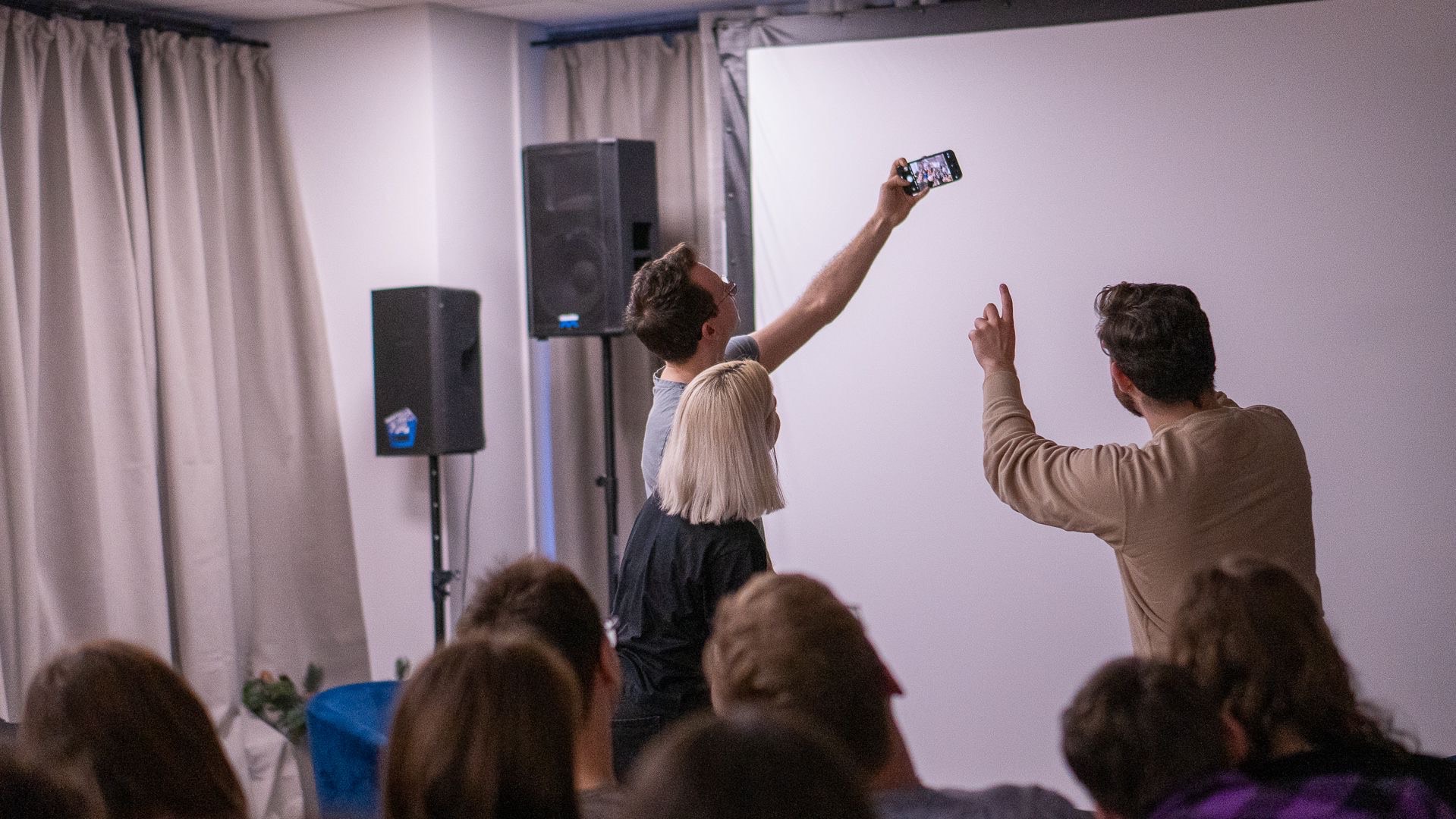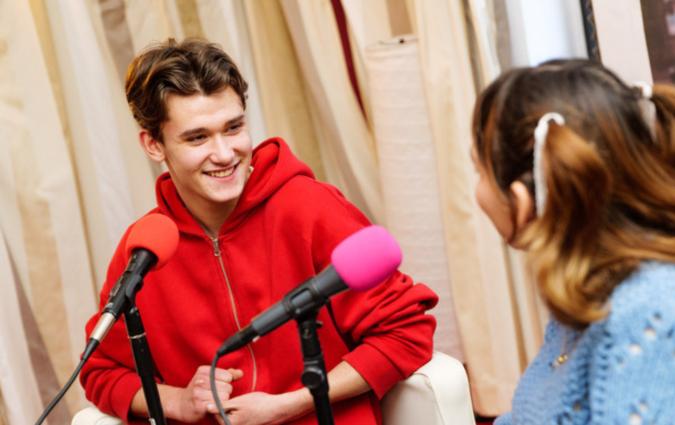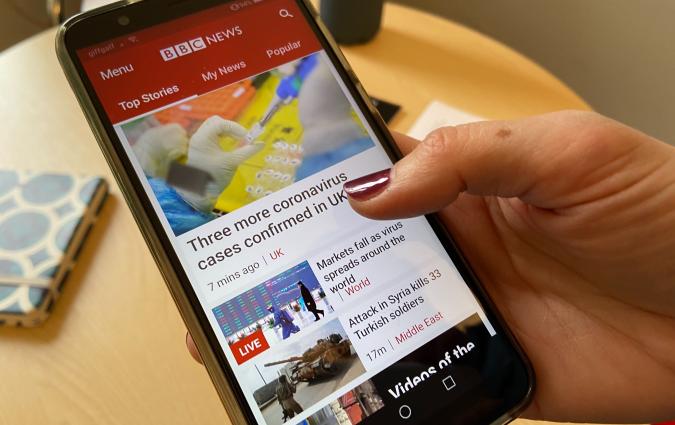How these new platform-driven news outlets are attracting young audiences

Journalists from Gen, știri taking a selfie at an event. | Submitted by Gen, știri
Gen Z has confounded news publishers for years. Many avoid the news altogether, and others gravitate towards content creators to get informed. Mainstream media outlets are trying to get their attention, often without success.
Despite an apparent disinterest in conventional formats, young people are still interested in news. They try to understand the world around them, often turning to alternative voices on digital platforms. In response to this challenge, more than four in ten (42%) publishers say they’ll be looking to launch or trial a ‘youth’ product this year, according to our latest report on media trends.
Some of these initiatives have been around for a few years now. What strategies are they employing to reach younger audiences? How are they approaching these audiences? What have we learnt from their work? These questions are at the heart of this article, featuring four projects focusing on delivering news to young people in ways that appeal to them.
Go where the young people are
Smartphones are everywhere. So it’s not surprising that mobile-first digital platforms are widely popular with Gen Z. According to our research, video is becoming a more important source of news online, especially with younger groups. Platforms like TikTok, YouTube and Instagram are staples in the online diet of young people, for news as well as any purpose. In fact, in 2024, TikTok overtook X in terms of usage, according to our research.
These platforms are the focus of RocaNews, an outlet founded by Billy Carney and two friends during the pandemic after they graduated from college. This American news start-up operates through several channels: Instagram, a news app, newsletters, and a YouTube channel, aiming to reach a cohort of 18 to 35-year-olds. The outlet mainly produces daily news explainers through bite-sized texts, eye-catching images and the occasional humorous meme.
Carney, who studied business administration at the University of Notre Dame in Indiana, said that he and his co-founders saw how news companies were becoming increasingly partisan and detached from young people during the pandemic. He said that when they started, they first tried to establish a website and a Twitter account, but didn’t see much traction. That’s when they decided to focus on the platforms they themselves use, instead of focusing on those used by other journalists.
“We ended up just focusing totally on Instagram because at the time, that’s what we used. We were on Instagram all day. TikTok was not as big then, at least with our demographics of 20-year-old guys,” he said.
Today, RocaNews’ Instagram account has over 1.6 million followers. According to Carney, its two daily newsletters have over 200,000 subscribers while its app has tens of thousands of active users. Financially, the outlet is profitable via advertising and subscriptions. It has six full-time employees and 11 part-time employees.
“It's easier for us [as consumers] to not leave Instagram to get the news. If we can just get it right there, that's convenient,” he said. “We try to make it fun and engaging with memes. Journalism has been very sterile for a while from our perspective.”
Romanian journalist Teodor Tita started Gen, știri three years ago on Instagram, also looking to address the lack of news tailored to young people. Tita, who has over 20 years of journalism experience in various media outlets, told me that Romanian news media didn’t take younger audiences seriously at the time
According to our research, younger groups in many countries are showing a weaker connection with news brands than they did in the past. Tita speculates that this is not because young people are turned off by news, but because they lack trust in traditional media.
“Not only are people interested in news, but they are actively searching for [it],” said Tita. “They don’t trust legacy media, but they go on Reddit, they go on Instagram, they go to influencers [who] don’t have an ethics code. They want the news. So when we came around with a structured offer on TikTok and Instagram, it worked.”
Three years later, Gen, știri has over 172,000 followers on Instagram and 93,000 on TikTok. Its audience is 90% under 35 and 60% under 24. It mainly covers daily news and explainers through textual images and short-form videos. With a total of 12 employees, it sustains itself via advertising, but is looking to apply for grants to develop long-term. This would move the outlet away from its dependency on Big Tech and towards creating something of its own, such as a platform for news.
“We depend on the whims of the owners of these platforms, so our next goal right now is to make sure we are on our own island, and not renting space on Mark Zuckerberg’s or Google's platform,” says Tita.
Rieke Smit is responsible for media education and policy at #UseTheNews, a German initiative that focuses on media literacy and news avoidance of young people. In 2024 she coordinated Social News Daily, a project that sought to reach young audiences on platforms like TikTok, Instagram and Twitch.
“You need to start to reach out to young people on the platforms where they are,” she said. “Then, if you're lucky, you get them to use your content on your own website. They are so used to their own bubbles on social media… Why should they just step away from that and be somewhere else?”
Those trying to reach young people often focus on Instagram and TikTok. But they also consume news on places like YouTube and Twitch, a video live-streaming platform, which allow for much longer formats. This contradicts those who claim that young people have a short attention span, Smit said.
“This is your future audience,” she said. “Maybe right now it doesn’t seem like a good investment because you are not getting money from being on TikTok, but you have to think about the long term. At some point these people on your TikTok account may go outside these platforms and buy a subscription.”
Create relevant and original content
Video-based social media platforms are not the only route to success in this field. Moldovan news outlet #diez operates mainly as a traditional online news website, cross-promoting its pieces on different platforms. Launched in 2013 as a news platform for young people, the outlet sustains itself with a mix of advertising revenue, international grants, and donations from its audience on Patreon. Most of its audience is under 35.
Editor-in-chief Valeria Batereanu told me the outlet distinguishes itself from legacy outlets for the content it produces and the way it delivers it. For example, it focuses on popular topics like education and the job market, including covering opportunities for young people.
“We are the only niche portal in Moldova that focuses its content on education, start-ups and job opportunities,” she says. “At the same time, we provide innovative coverage of socio-political events, using accessible language for our readers.”
RocaNews, the American start-up, decided to take accessibility to a new level by creating what it calls ‘Duolingo for news’, an app that gamifies reading the news. Carney tells me, for example, that users get points by answering questions about a news story. Sometimes, they are even shown a picture to guess what news story it relates to. With any right answers, users gain experience (XP). They can also rank up on leaderboards with any articles they read.
“We're always trying to figure out ways to make the news more engaging,” said Carney. “If people are not engaging with news, it’s partly because of partisanship, but also because everything else is objectively more fun than it was 20 years ago. There are so many options to get your dopamine hit. So we wanted to make the news more fun and enjoyable. We don’t really think news has to be boring.”
With TikTok, Instagram Reels, and YouTube on the rise, the line between news and entertainment is increasingly blurry, especially with the rise of influencers and alternative voices.
Smit said that young people are not just looking to consume news, but looking for interaction and connection. They don’t necessarily want content that looks like traditional news. They want to know how the news affects them personally.
“People who are not interested in news will directly swipe away [anything that looks like news], so you don't have a chance of actually reaching them and showing them that you can be trusted,” she said. “Find a middle way between both: make yourself transparent and say you are a news outlet, but still look a little bit more like the viewing habits that young people have on social media.”
Build trust and authenticity
According to our own research, many young people say that the unfiltered nature of video platforms comes across as more trustworthy and authentic than traditional media.
All the people I spoke to stressed that including Gen Z voices was a key part of their strategy to build trust.
Tita from Romania’s Gen, știri said that the secret to its success is combining authenticity and a strong code of ethics. Part of this authenticity, Tita said, is employing young people to give a genuine voice to their outlet. All of its 12 employees belong to the Gen Z cohort, with the exception of Tita, who is now mentoring them.
“We are producing journalism for the public,” he said. “Many journalists in many markets are producing journalism for other journalists. We don’t do that.”
Despite being run by young people and being aware of what the research says about what young people want, all these outlets have also tried and failed at developing certain content. RocaNews, for example, said they tried to put their content on X with not much success while Gen, știri is currently struggling to take off on YouTube.
The 12 people in #diez’s editorial team are mostly young, with many in the early years of their university studies. Editor-in-chief Batereanu, herself Gen Z, said that this allows them to listen to young people’s needs.
“We focus on providing useful content that guides young people through the most significant events in their lives, such as exams, educational processes, first elections, first jobs, study and internship experiences abroad,” she said. “We provide an open platform for young people to share their stories and explore the issues they bring to us. Our programmes include direct interaction with our audience, such as a training programme for future correspondents, inviting them to write for us and giving voice to new young people and the topics that concern them.”
This future correspondents program is aimed at high school students in the country who are interested in developing journalism skills in a newsroom. Modelled like a sort of journalism bootcamp, the students have a number of training sessions in #diez’s headquarters, and then they will go on to produce journalistic projects on their communities. #diez covers all logistical expenses, and a handful of students are selected to become paid high school correspondents.
Smit says that a key factor when developing products for young people is to speak with them rather than about them.
“Try to get young people on board inside your company or from the outside to develop the new outlets and formats,” she said. “That’s how you can make sure that you are actually reaching the people that you want to reach.”
In every email we send you'll find original reporting, evidence-based insights, online seminars and readings curated from 100s of sources - all in 5 minutes.
- Twice a week
- More than 20,000 people receive it
- Unsubscribe any time
signup block
In every email we send you'll find original reporting, evidence-based insights, online seminars and readings curated from 100s of sources - all in 5 minutes.
- Twice a week
- More than 20,000 people receive it
- Unsubscribe any time






